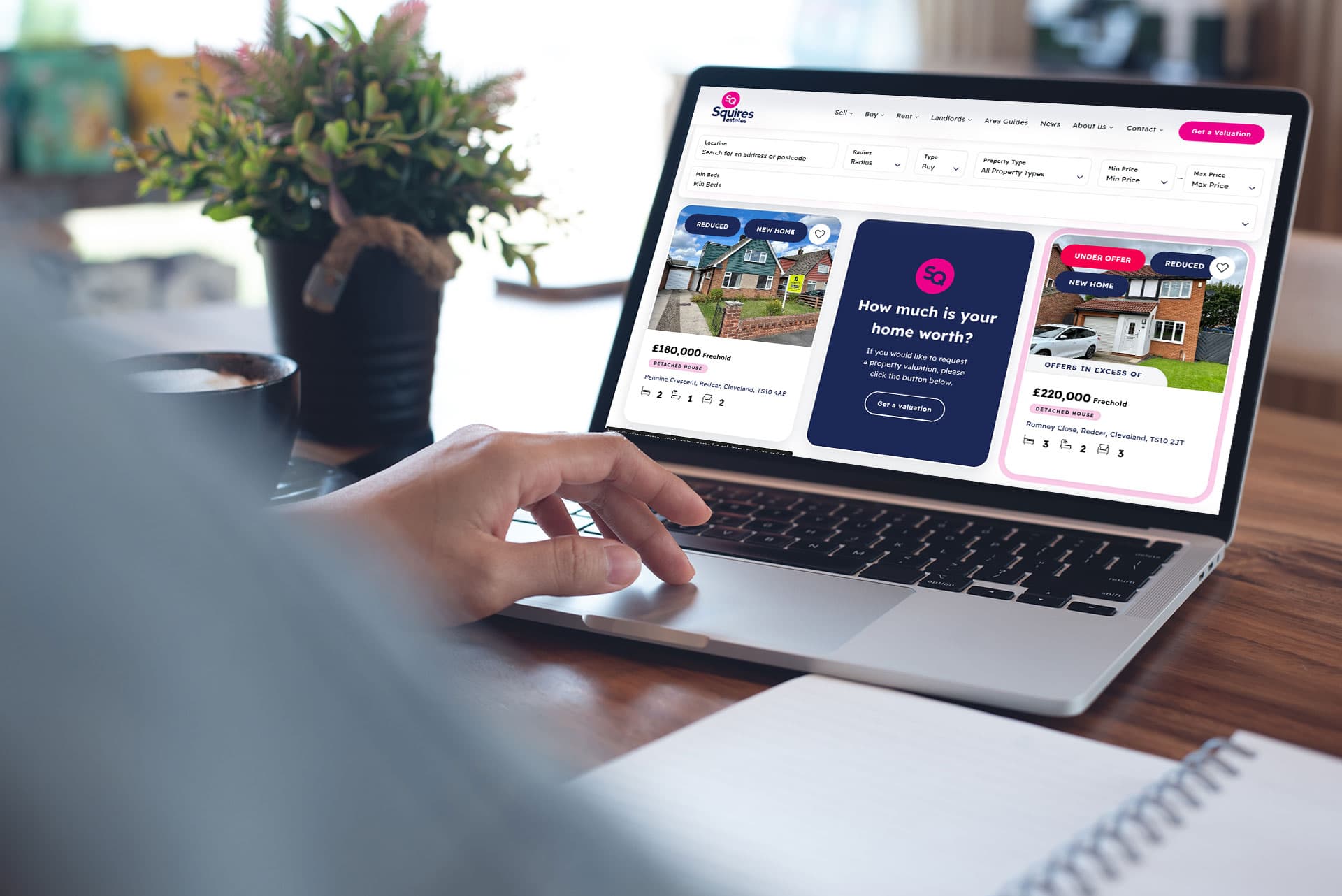Guide to Buying a Property
The prospect of buying a new property can seem daunting, but with the right information to hand the process can become much more straightforward. Our step-by-step guide to buying a new property covers the basics so you can start your journey towards your new home.

Get your Finances in Order
Given the costs involved in buying a new home, the first thing you need to do is ensure you can afford to go ahead.
If you require a mortgage to purchase a property, you’ll need at least 10% of the property’s value for a deposit (although 95% mortgages are available) and if you meet their requirements, a mortgage lender will usually lend around 4-5 times your annual salary.
Other costs to consider include the valuation fee, solicitor/conveyancer fees, stamp duty costs and moving fees. Put together an estimation of all these to estimate how much your budget needs to be

Start Your Property Search
The fun part of buying a new home is the property search. This is when you pick the area you want to live in and arrange property viewings to find houses that meet your criteria.
In general terms, the closer to the centre of a town or city you want to live, the more expensive it will be. See what the nearest transport links are like; whether they can get you to work fast enough and the zone you are travelling from.
Also consider local amenities and their accessibility, such as schools for your children, local shops, doctors, dentists and any other services you will regularly rely on.
You should decide whether you want to live in a new-build or a period property (Victorian/Edwardian etc.). New-builds of course have never been lived in so are easier to move into, although they may not have the same amount of storage space as a period property nor the period features.

Things to Look Out For When Viewing a Property
When viewing a property, take your time to look at things like:
- The general condition of the property (damp, old boilers, block drains etc.)
- What are the frames like on the windows and doors?
- Ask how long the property has been on the market.
- Check what is included in the price and is the seller in a chain.
- Inspect the front and back of the house, as well as the roof for missing tiles.
- Enquire about the utility and council tax bill costs.
- Look at any modification work that may have been carried out.

Making an Offer
Once you have found a property you’d like to buy, the next challenge is to make an offer and one that is likely to be accepted.
Your status as a buyer also matters, as sellers tend to prefer people who are not tied into long chains and can demonstrate their seriousness as a buyer. If you’re not a cash buyer, it’s a good idea to get a ‘mortgage in principle’ from a lender before you start your property search, as it can help you get to the front of the queue and beat other bidders.

Arranging a Mortgage if Required
The mortgage lender may ask you to go through an affordability test (although banks and building societies no longer have to request this from August 2022) to prove you can afford to pay for the mortgage over its full duration.
This involves a full credit check and requires you to provide detailed information about your income and current financial commitments. Before you can exchange contracts, you also need to have a formal offer from the mortgage lender to proceed.

Hire a Conveyancing Solicitor
The conveyancing solicitor will take care of all the legal aspects of the buying process. Meanwhile, the seller will also hire a conveyancer and the two legal entities will serve as representatives for both parties.
Their job is to ensure everything is in order with the contract, negotiating any finer points of the sale that are requested by the buyer and seller, while managing the surveys and the transferring of funds.

Surveys
The mortgage lender will request a valuation by a surveyor to confirm they are happy to lend against it. However, this will not check the full condition of the property and land, so you will have to organise your own survey to assess this. There are four main types of survey:
- RICS Home Survey – Level 1
- RICS Home Survey – Level 2
- RPSA Home Condition Survey
- RICS Home Survey – Level 3
Each level has its own benefits, so make sure to do your research on each one to see which one is right for you.

Exchange of Contracts and Completion
Once you have the surveyor’s report and all related action has been taken, you can then proceed to exchange the contracts.
At this point the transaction becomes legally binding for both parties and pulling out after this point could lead to you losing your deposit. When you have received a formal mortgage offer, the conveyancer is happy with the searches and deposit is ready to be transferred, then you can arrange contracts.
You will also need to agree a completion date before exchanging, which is typically up to 4 weeks after the contracts have been exchanged.

Are you thinking about selling or letting your home?
Let our team help you get the most out of your property.

